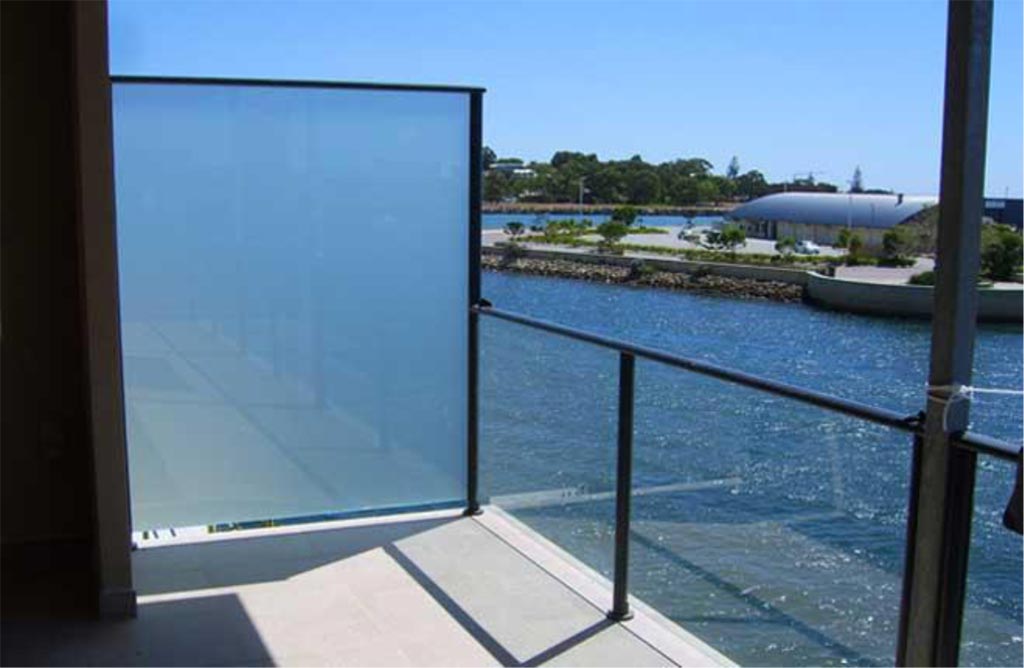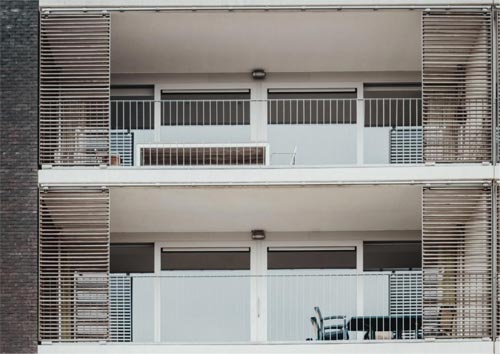20 Seriously Effective Wind Mitigation Strategies for your Next Project
Posted on 04 May 2020
Creating outdoor spaces that are comfortable and fit for purpose is more important now than it has ever been. For us this means finding wind mitigation strategies that fit with the aesthetics and intent of a development and this can be one of the most critical aspects of the studies we undertake.
For this reason, we felt it would be useful to highlight some of the options for wind mitigation and perhaps in the process give you some ideas for your next project.
We often employ a combination of the following strategies to reduce the impact of wind effects and if you’d like to get our take on your project, we’d welcome you to reach out – we’re always happy to assist.
Natural Landscaping
- Rows of hedges or trees, scattered throughout a space
As well as often being aesthetically pleasing, hedges and trees can mitigate horizontal wind acceleration at ground and elevated levels. It is also possible to mitigate downdraught from facades as well as wind acceleration around building corners.

- Boundary Trees
Trees along the boundary of a space are good for mitigating direct exposure to wind as well as wind funnelling between buildings. They are unlikely to be suitable for downdraught from buildings.
- Large Stationary Planters
A combination of large planters that break up wind flow at ground level with dense planting may be enough to reduce wind speeds for a given activity. This approach can be effective to reduce the impact of funnelling, for which a combination of shrubs and small trees should be used.

- Inventive Natural Structures
Trees and hedges do not always have to go in straight lines. Here is an example of a green tunnel, which could make for an extremely effective mitigation strategy for combatting downwash. Pergolas or green canopies could be equally effective, although care should be taken to make sure that foliage is dense and effective during the right season.

Balconies and Raised Terraces
- Impermeable Balustrades
Commonly found on balconies, but also outdoor terraces, balustrades are most effective for direct exposure to winds. For larger outdoor terraces such as this one, a combination of a balustrade and natural landscaping can be effective as balustrades are not suitable for reducing downwash.

- Balcony edge screens
Balcony edge screens can be used when an elevated terrace is relatively deep and subjected to strong wind being upwashed from the façade below. This does not work if the wind conditions are generated by the tower above the terrace.

- Balcony End Screens
End screens or architectural features such as this one can be incorporated to negate the impact of wind acceleration around the corner of a building. If done correctly it can create an interesting feature too.

- Inset Balconies
Excellent for creating, sheltered, usable spaces inset balconies are often the most effective method for ensuring private balconies meet comfort criteria. By combining screens such as that shown in the image below with an inset balcony a space is created that is versatile and protected all year round.

- Balcony Midway Screens
Screening can be positioned between different apartment blocks to reduce the impact of side-streaming at elevated levels as well as reduce the impact of direct exposure to the wind. Positioning these midway screens correctly is key to ensuring the most comfortable space.

- Baffle Screens
This treatment is very effective for situations where there is a venturi effect between two tall buildings or a street canyon effect. This idea can also be used to design an airlock for the main entrance to a building.

- Winter Gardens
For balconies that are north facing and exposed, it is often worth considering where winter gardens or a combination of winter gardens and balconies might be a preferred alternative to standalone balconies.

Hard Landscaping
- Artwork/structure
Where screening might be unsightly and natural landscaping impossible due to other restraints, it might be worth considering a piece of artwork or sculpture. By picking something that has a porosity appropriate for wind mitigation, you could have a beautiful addition to your space that is functional too! This might be used to reduce wind funnelling between buildings.

- Solid Canopies
Perhaps the most famous canopy in London is The Leadenhall Building. Canopies such as this may be required when flat facades create downdraughts that impact at ground level.
The location and size of the building will have a significant impact on the size and position of the canopy required. They are usually not suitable for direct exposure to wind, wind funnelling between buildings or wind acceleration around building corners.

- Overhang shading
Similar to canopies, but on a much smaller, more localised scale, overhang shading is often porous and has the combined benefit of sun shading. Useful for mitigating downdraught from building façades, it is less suitable for direct exposure.
- Localised Screening
This is a great solution for open spaces where seating is required, but the opportunity for natural landscaping is limited.
Screens such as this can mitigate direct exposure to wind and wind funnelling between buildings but are not suitable for downdraught from buildings.

- Porous Screening (30-50%)
Porous screening is good for mitigating direct exposure to wind and wind funnelling between buildings. By making the screens porous, it has been proven that the distance for which shelter is provided is increased (when compared to solid screens). However, screening is unlikely to be suitable for downdraught from buildings.
Building Shaping and Building Form
- Building massing
Getting the overall building massing right at an early stage can save significant headache later in design.
As a rule of thumb, a cluster of buildings can offer shelter to one another and push the windy areas to the edge of the cluster. Also, orienting the narrower side of a tall building to the prevailing wind direction helps to reduce downdraught forming.
Masterplan Studies using Computational Fluid Dynamics (CFD) are particularly effective at informing early stage design as it is relatively easy to move buildings around in the simulation and re-test.

- Large Podium
Podiums are often effective at mitigating downdraught off a building façade. However, if the podium itself is then designated as a usable space, such as a garden or a seating area, care must be taken to ensure that this meets comfort criteria. Podiums are not suitable for reducing the impact of direct exposure or wind funnelling between buildings.

- Recessed Corner
By recessing the corner of a building, it is possible to reduce the wind acceleration around the corner. This mitigation strategy is not suitable for direct exposure to wind, wind funnelling between buildings or downdraught.

- Rounded Corners
Sharp corners create more acceleration than rounded ones. By rounding off corners, it may be possible to bring comfort levels within comfort criteria if corner acceleration is leading to exceedances.








